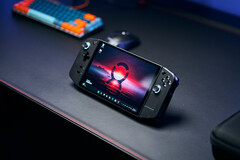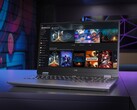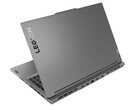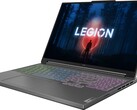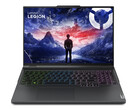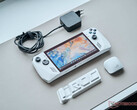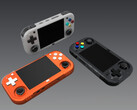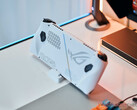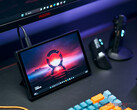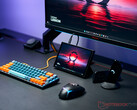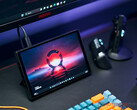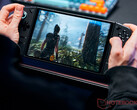1. The Legion Go 2 needs a screen overhaul
The Lenovo Legion Go, which we recently rated highly in our review, gets a lot of praise for its screen, but there are some ways Lenovo can improve it even more with the Legion Go 2. The 8.8-inch IPS LCD is one of the largest in a handheld gaming PC to date, spare the Onexplayer 1X, and it sports a fast 144 Hz refresh rate and handy touch capabilities. The 2560×1600 resolution is also very flexible, allowing for half-scale rendering for improved performance without sacrificing too much in the looks department — even in games that don't support AMD's Fidelity FX Super Resolution upscaling tech.
However, despite the Legion Go's impressive display specs, there are still some things that need improvement. Most importantly, Lenovo needs to add variable refresh rate support to the Legion Go 2. Without VRR or FreeSync, gaming at lower frame rates, which is where these handheld gaming PCs usually operate, can be very frustrating due to screen tearing.
Lenovo should also use a native landscape display in the Legion Go 2. The internet isn't exactly littered with complaints from users about the portrait display wreaking havoc with older games due to the weird configuration, but it's a weakness compared to the Asus ROG Ally (curr. $599.99 at BestBuy).
2. Better controls
As far as gaming handheld control schemes go, the Legion Go sits somewhere between a Nintendo Switch and a Steam Deck, but it doesn't satisfactorily commit to either gimmick. The removable controls on the Legion Go serve little purpose beyond the admittedly nifty FPS mode. There's no way to use the two controllers as separate controllers for multiplayer, like on the Nintendo Switch, and there's no way to physically join the Legion Go's controllers when they're separated from the tablet. Implementing those two features, or at least one of them, would make the Legion Go 2 even more versatile than it currently is.
On the topic of controllers, the Legion Go 2 deserves to get a second touchpad on the left side of the screen if Lenovo hopes anyone will take the touchpad functionality seriously for gaming. Ayaneo, for example, has gone this route, offering dual touchpads on its similarly-oversized Kun handheld (watch our Ayaneo Kun first impressions video below for more).
3. Lenovo needs to fix Legion Space or ditch it completely
As with all handhelds on the market, the Legion Go has its own software suite, and, as will all other handhelds, Lenovo's software solution kind of sucks. Lenovo's Legion Go is designed to work around Legion Space, which seems to be unanimously despised by those who are forced to use it. Most of the complaints stem from poor performance and a lack of focus. Lenovo just seems to want Legion Space to do too much. Lenovo should focus on turning Legion Space — or whatever software solution it plans to use for the Legion Go — into a simple software suite for the basics.
Nobody needs Lenovo to make a game library. Most gamers use Steam or some other similar game library, and the library clutter has been a common topic of discussion in the gaming community. What Legion Go 2 users need — and want, from all indications — is an easy-to-use, lightweight piece of software to handle TDP control, BIOS updates, and controller configuration, with an in-game overlay for on-the-go adjustments. Windows and Linux both have ways to handle drivers and even graphics configurations, and adding that functionality to Legion Space just seems to cause conflicts, if recent reports on Reddit are to be believed.
I'm having buyers remorse due to Legion Space. Rant/review
byu/Jenbu inLegionGo
4. Better system configurations
Handheld gaming PCs are plagued by the same issues as consoles and laptops — a lack of upgradability. While you can upgrade the storage on the Legion Go with a bigger M.2 SSD, that's where it ends, the RAM is soldered onto the motherboard right next to the CPU. This is usually fine — you give up some flexibility for the form factor — but Lenovo offers no customisation options for things like different RAM or even CPU configurations. At least Asus offers the cheaper ROG Ally with the regular AMD Ryzen Z1. Why not offer a Legion Go 2 with the AMD Ryzen Z1 Extreme paired with 24 GB or 32 GB of RAM instead of 16 GB, which is rapidly becoming insufficient for gaming — especially with an iGPU eating up significant amounts of that RAM.
More RAM and CPU options than the current would allow Lenovo to offer the Legion Go to those who aren't prepared to spend the $699.99 on a gaming handheld and those who might want to use the handheld as a make-shift portable workstation and need more RAM.




